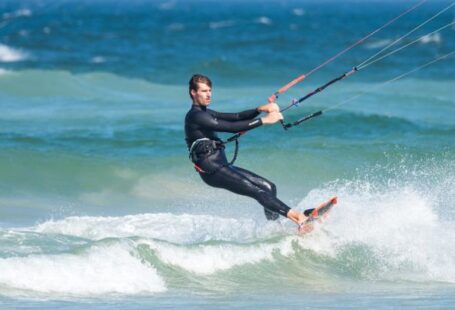Triathlons are intense and demanding endurance events that test an individual’s physical and mental capabilities. Consisting of swimming, cycling, and running segments, triathlons require a diverse set of skills and training techniques to excel. Among the three disciplines, swimming often poses a significant challenge for many triathletes due to its technical nature and the need for efficient technique and endurance. To optimize swim training for a triathlon and improve overall performance in the water, athletes must focus on specific strategies tailored to their needs and goals.
Develop a Structured Training Plan
Creating a structured training plan is essential for optimizing swim training for a triathlon. This plan should include a mix of technique work, endurance training, speed drills, and recovery sessions to build a strong foundation for race day. Consistency is key, so make sure to schedule regular swim sessions throughout the week and gradually increase the volume and intensity as the race approaches.
Focus on Technique
Swimming efficiently is crucial for conserving energy and maintaining speed over long distances. Work on improving your stroke technique by incorporating drills that target specific aspects of your stroke, such as body position, breathing, and arm movement. Seek feedback from a coach or experienced swimmer to identify areas for improvement and make necessary adjustments to your technique.
Incorporate Open Water Swim Practice
Triathlon swim legs often take place in open water, which presents its own set of challenges compared to pool swimming. To prepare for the race conditions, incorporate open water swim practice into your training routine. Practice sighting, navigation, and dealing with waves and currents to feel more confident and comfortable during the swim portion of the triathlon.
Build Endurance and Strength
Endurance is a critical component of swim training for a triathlon, as it directly impacts your ability to sustain effort throughout the swim leg. Focus on building your endurance by gradually increasing the distance of your swim workouts and incorporating longer sets into your training sessions. Additionally, strength training exercises targeting the muscles used in swimming, such as the shoulders, back, and core, can help improve power and efficiency in the water.
Include Interval Training for Speed
Interval training is an effective way to improve speed and anaerobic capacity in swimming. Incorporate intervals of varying lengths and intensities into your workouts to challenge your cardiovascular system and improve your overall speed. Short, high-intensity intervals can help boost your anaerobic threshold, while longer intervals at race pace can improve your speed and pacing strategies for the triathlon swim leg.
Practice Transitions
Transitioning smoothly between the swim and bike segments of a triathlon can make a significant difference in your overall race performance. Practice transitioning from the swim to the bike by simulating race-day conditions in your training sessions. Practice removing your wetsuit quickly, putting on your cycling gear efficiently, and getting on the bike without losing precious time. Efficient transitions can give you a competitive edge and help you maintain momentum throughout the race.
Stay Consistent and Listen to Your Body
Consistency is key in swim training for a triathlon, but it’s also essential to listen to your body and adjust your training plan as needed. Pay attention to signs of fatigue, overtraining, or injury, and make necessary modifications to your training volume and intensity to prevent burnout and promote recovery. Rest and recovery are equally important as training, so make sure to incorporate rest days into your schedule to allow your body to recharge and adapt to the demands of training.
Optimizing swim training for a triathlon requires dedication, focus, and a strategic approach to training. By developing a structured training plan, focusing on technique, incorporating open water practice, building endurance and strength, including interval training for speed, practicing transitions, and listening to your body, you can maximize your swim performance and set yourself up for success on race day. With consistent effort and a commitment to improvement, you can conquer the swim leg of a triathlon and achieve your goals in this challenging and rewarding endurance event.





